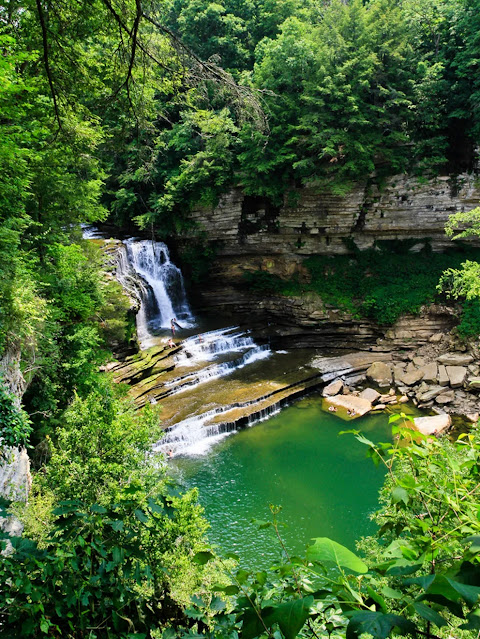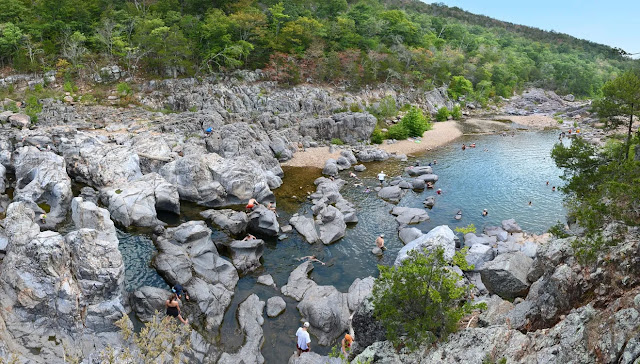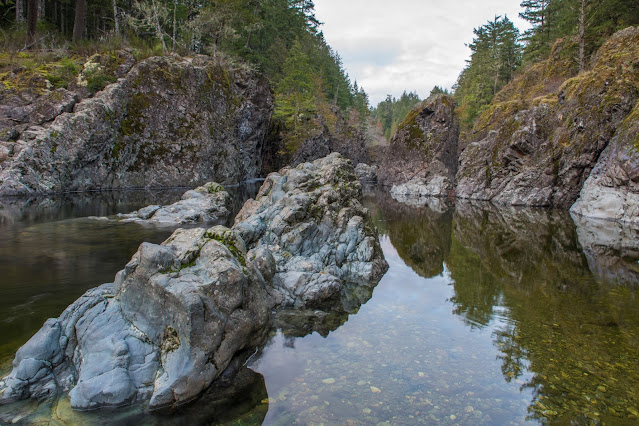 |
| Shutterstock |
 |
| Flickr/brenrub |
Aztec Falls--
San Bernardino National Forest, California: Aztec Falls is a half-mile hike from the Pacific Crest Trail (the West's answer to the Appalachian Trail) or a 90-mile drive east of Los Angeles. Set among the white boulders and towering conifers of San Bernardino National Forest, the cliffs offer dives ranging from five to almost 60 feet high, with poolside stone slabs on which the less adventurous can sunbathe and spectate.
 |
| Flickr/Michael Vermeer |
The Grotto—
Bruce Peninsula National Park, Ontario: About four hours northwest of Toronto, water has eroded the shoreline’s soft limestone, creating overhanging cliffs and deep sea caves, including the famed Grotto. After a 30-minute hike past fields of rare ferns and orchids, swimmers lower themselves down through a natural rock chimney and into the turquoise water below. The truly adventurous can then hold their breath, dive underwater, and continue through a sunlit tunnel out to the bay.
 |
| Flickr/mikerhicks |
Cummins Falls—
Cummins Falls State Park, Tennessee: There’s something almost theatrical about the setup here at this 211-acre park about 80 miles east of Nashville. The wide steps at the base of the 75-foot waterfall look exactly like an amphitheater, with all seats facing the headliner: a deep, cold-water swimming hole.
Dorset Quarry—
Vermont: Opened in 1785 as America’s first commercial marble quarry, this place once provided construction materials for such notable buildings as the New York Public Library. Nowadays, it’s a perfect spot for cannonballs, swan dives and belly flops—almost the entire perimeter of the swimming hole serves as one big diving platform.
 |
| Flickr/Soul_Smiling |
Hamilton Pool—
Hamilton Pool Preserve, Texas: Formed when the roof of an underground river collapsed, Hamilton Pool sits among 232 acres of protected Hill Country habitat, 23 miles west of Austin. The grotto, fed by a 50-foot waterfall that trickles or gushes into the canyon depending on the season, gives the feeling of swimming in a cave with all the lights flicked on. The pool is surrounded by massive limestone boulders, with a portion shaded by a limestone overhang dripping with stalactites.
 |
| Flickr/Achint Thomas |
Pools of ‘Ohe’o—
Haleakala National Park, Hawaii: The curvy Hana Highway through Maui’s lush rainforests wasn’t always the massive tourist destination it is today. To attract visitors to the area, a local hotel owner began calling a series of tiered, waterfall-fed swimming holes the “Seven Sacred Pools." Sure, it had a nice ring to it—despite the fact that there are more than seven pools, and none of them were ever considered sacred. Nowadays, the pools are part of Haleakala National Park, a collection of bamboo forests and hiking trails on the gentle slopes of Maui’s tallest peak.
 |
| Shutterstock |
Johnson’s Shut-Ins—
Johnson’s Shut-Ins State Park, Missouri: Leave it to the enterprising folks of the Ozarks to coin a colorful term that perfectly captures the surroundings here. A “shut-in” occurs when a river’s flow is slowed or blocked by boulders or rock formations. About 100 miles south of St. Louis, this labyrinthine series of small pools and whitewater chutes was created over a billion years ago when ancient volcanic rock blocked the east fork of the Black River. The spot gets crowded in the summer, but there are so many Jacuzzi-sized offshoots to reach by scrambling over the boulders that you’re sure to find one to call your own.
 |
| Flickr/tim.kahn |
Opal Pool—
Willamette National Forest, Oregon: A leap into the refreshingly brisk waters of Opal Pool should come with an automatic membership into the Polar Bear Club -- even during the dog days of summer, the waters hover near a bracing 42 degrees. Luckily, you will have worked up quite a sweat by the time you reach the pool, after a 3.5-mile hike through the old-growth Douglas firs of the Willamette National Forest’s Opal Creek Wilderness Area. When you finally see this hidden gem of a swimming hole, you might assume the name comes from its sparkling blue-green tones, but it was actually named for a park ranger’s wife!
 |
| Flickr/panoramicviewer |
 |
| Shutterstock |
 |
| Shutterstock |



This post have 0 komentar
EmoticonEmoticon